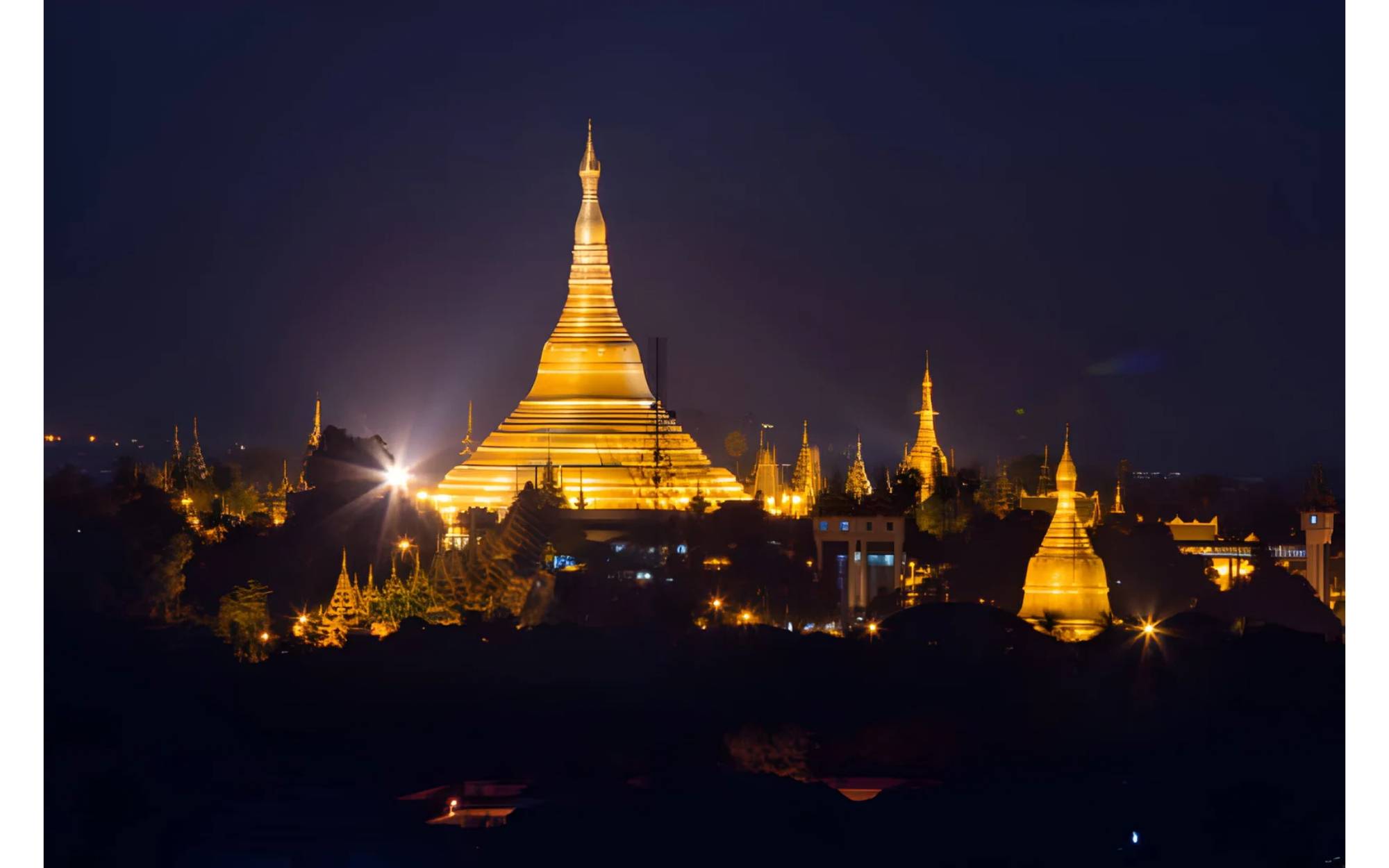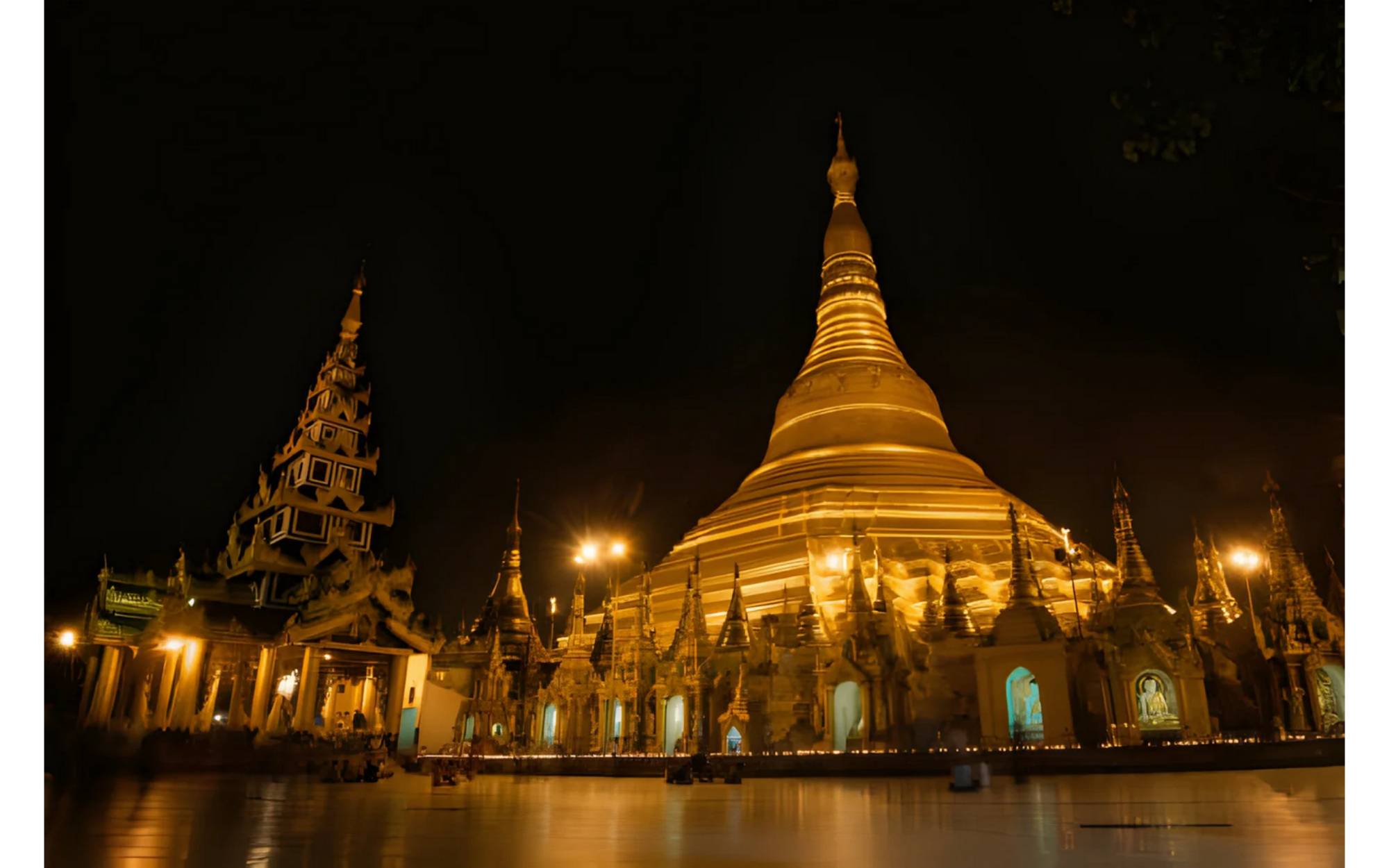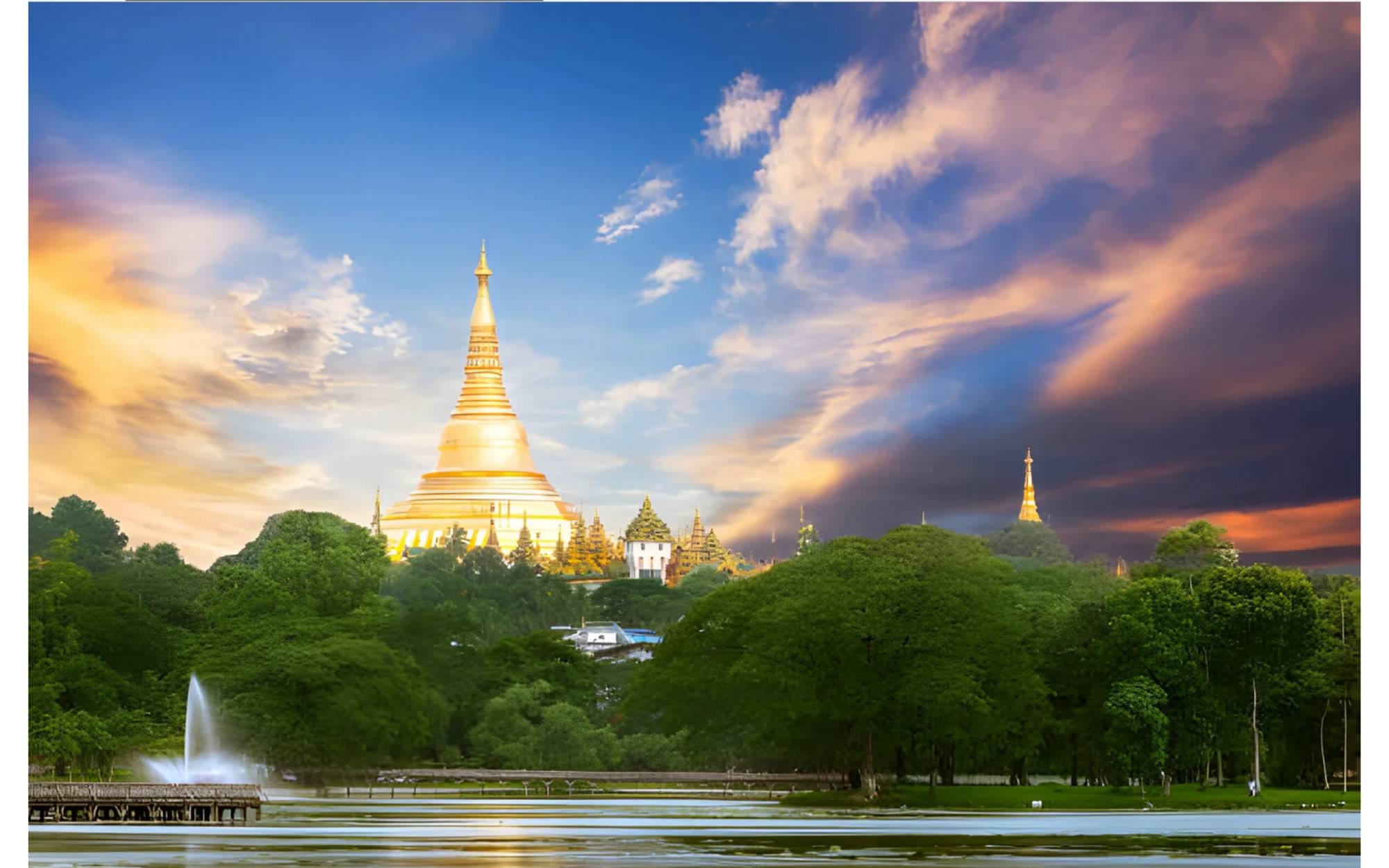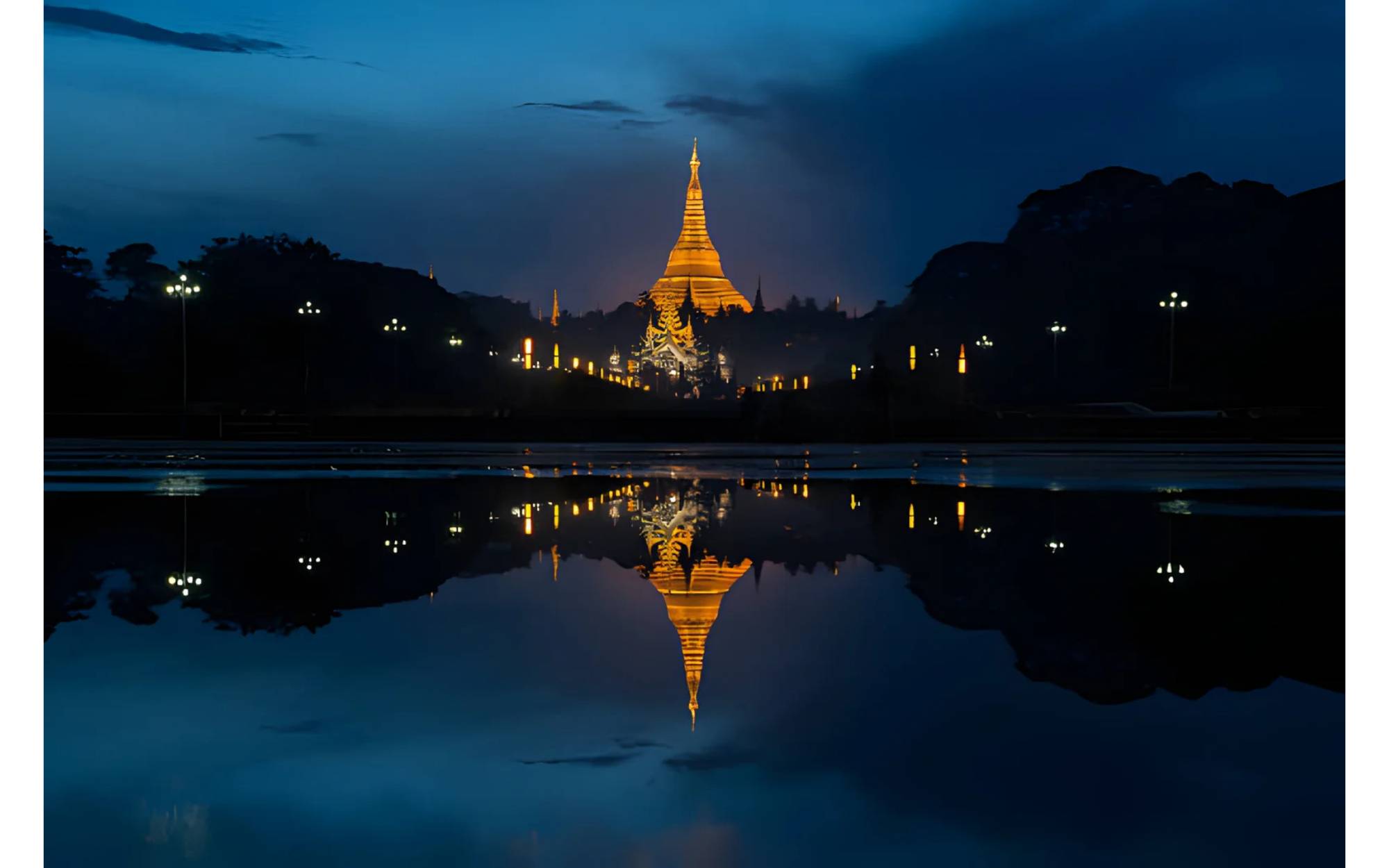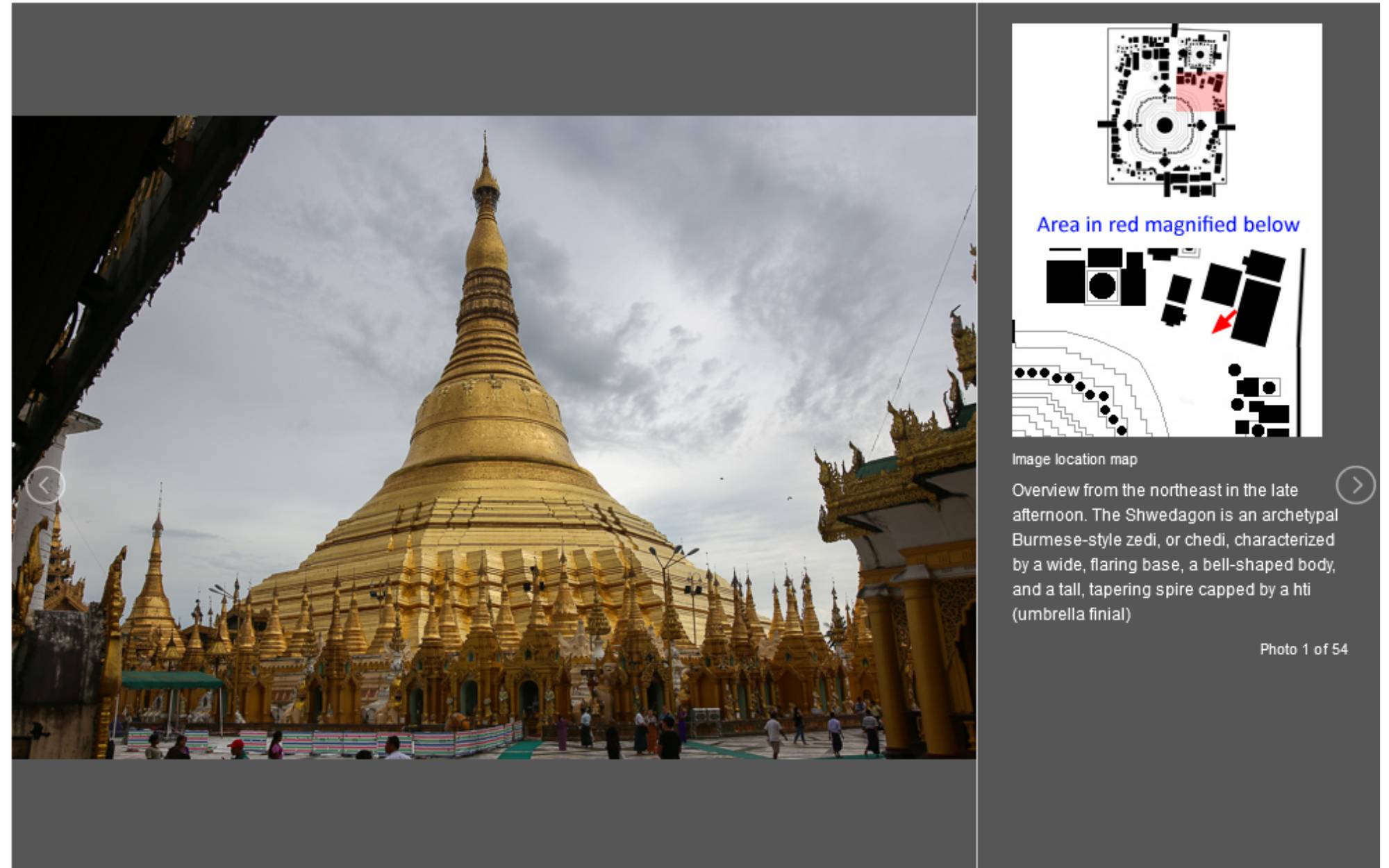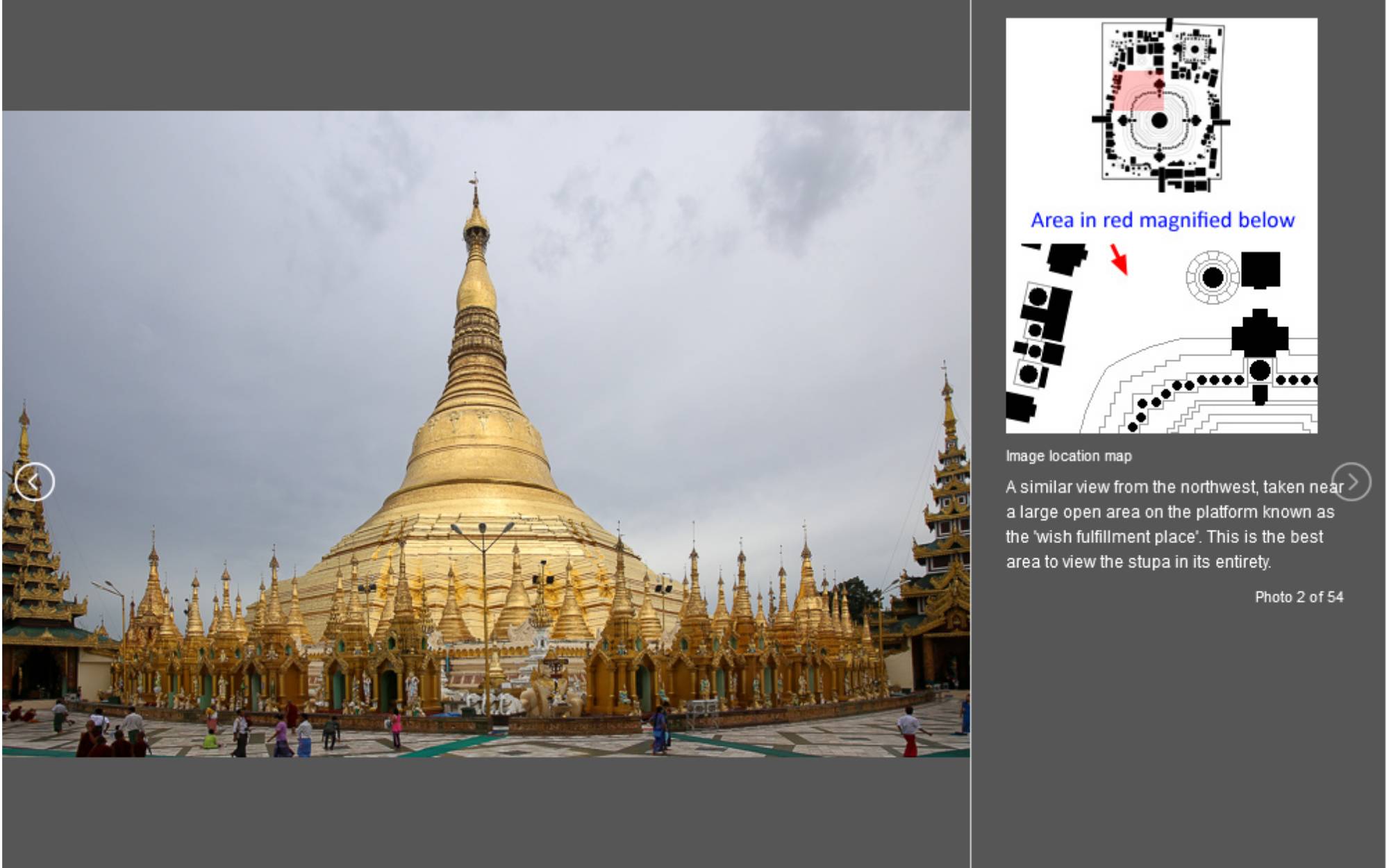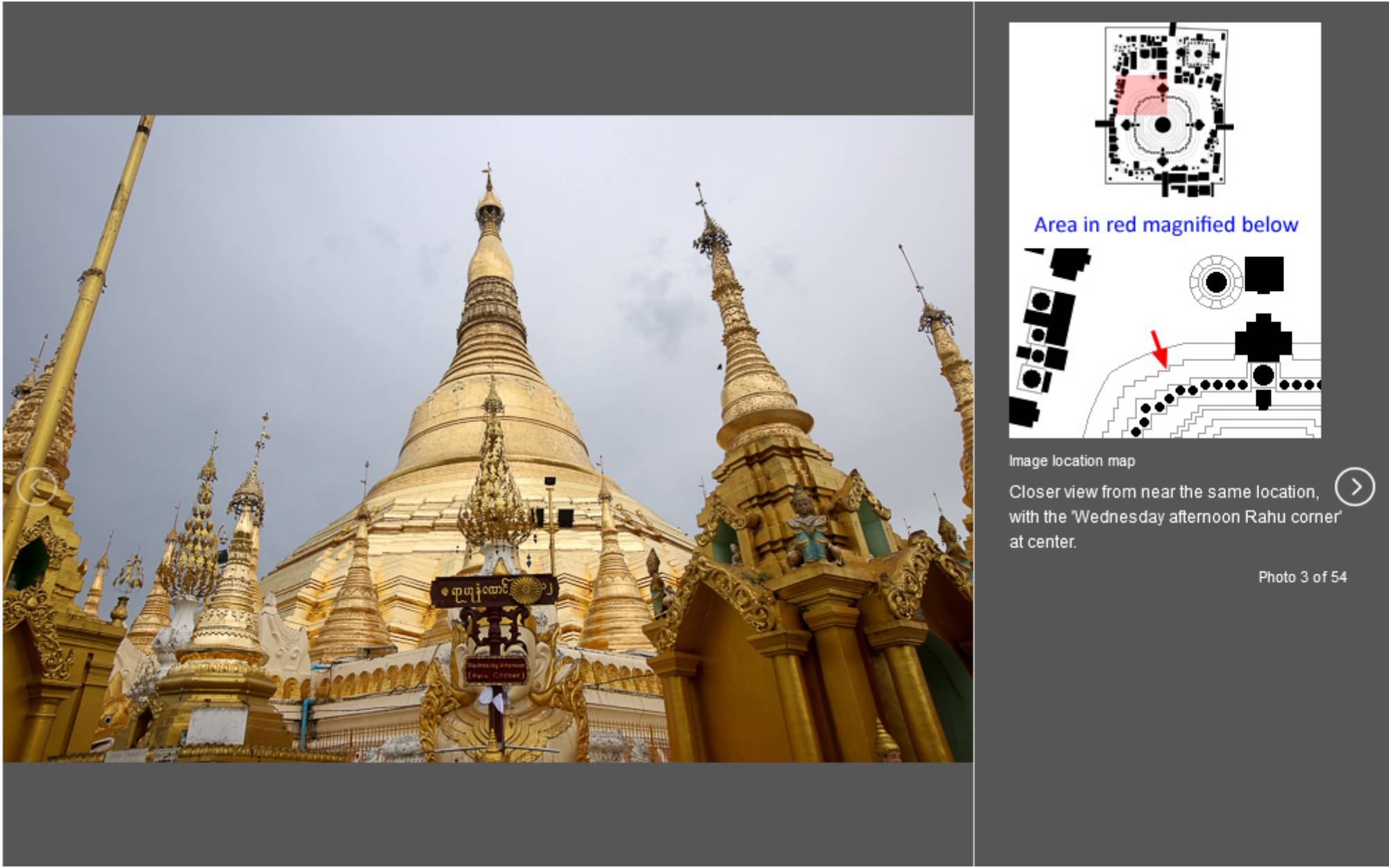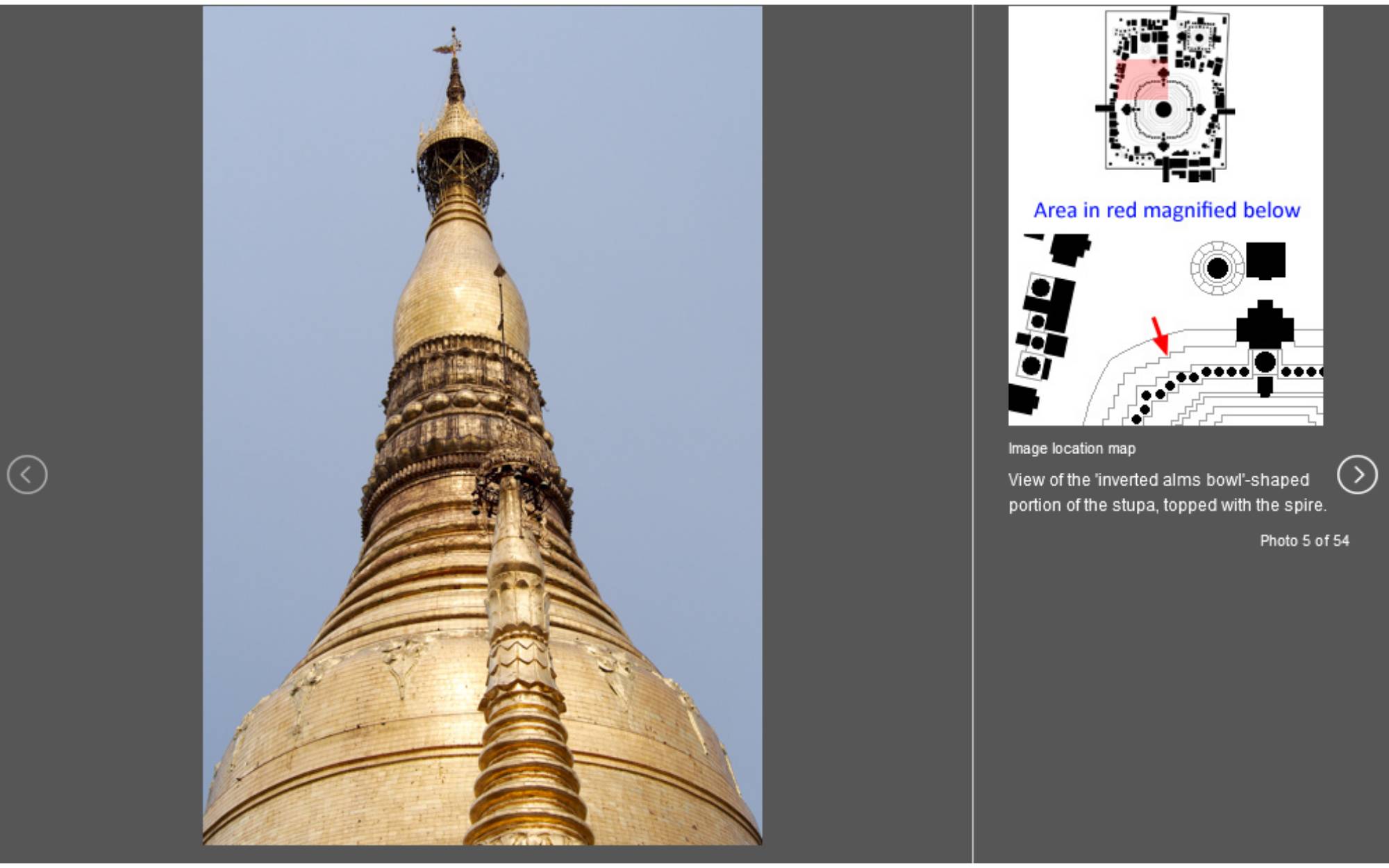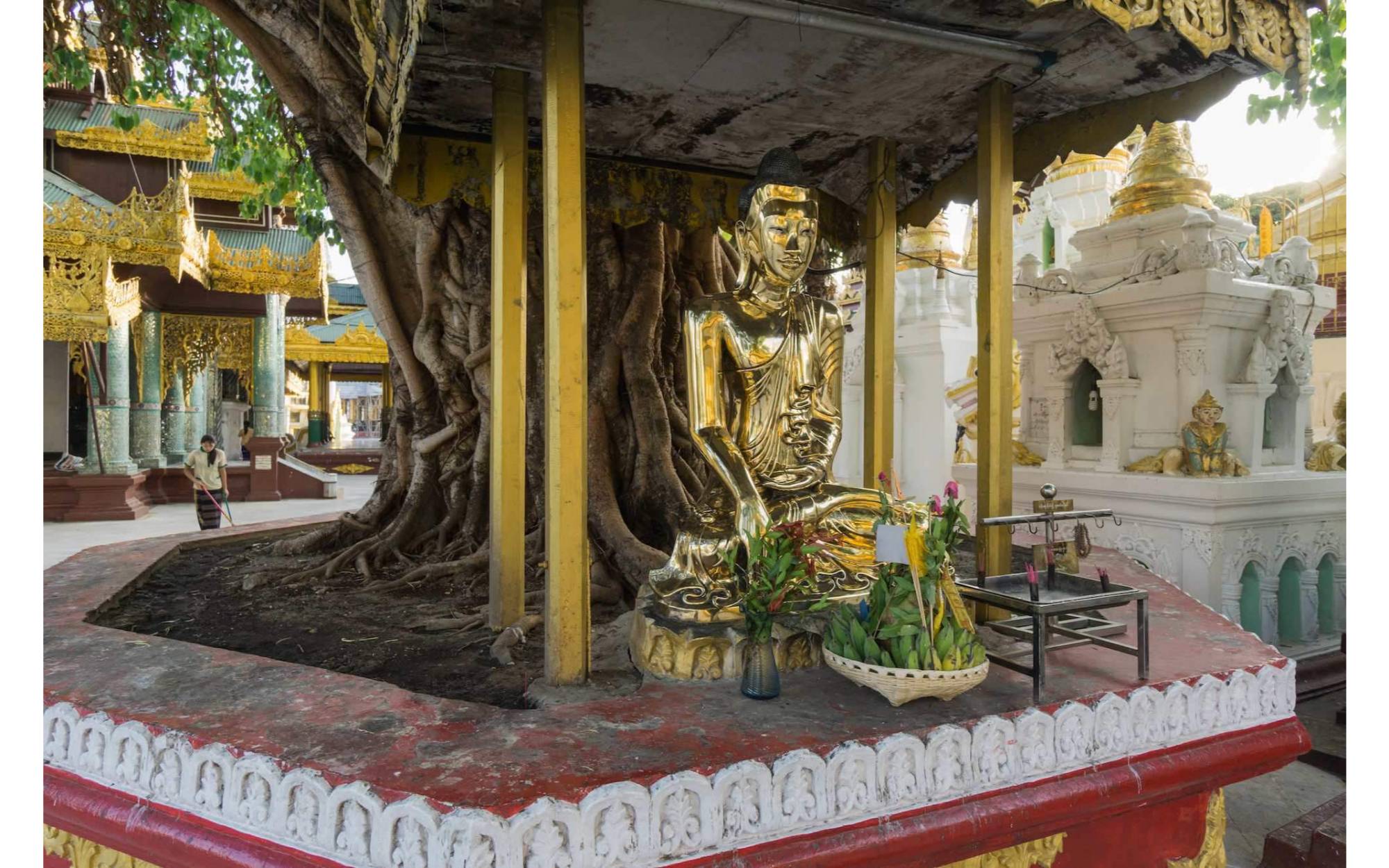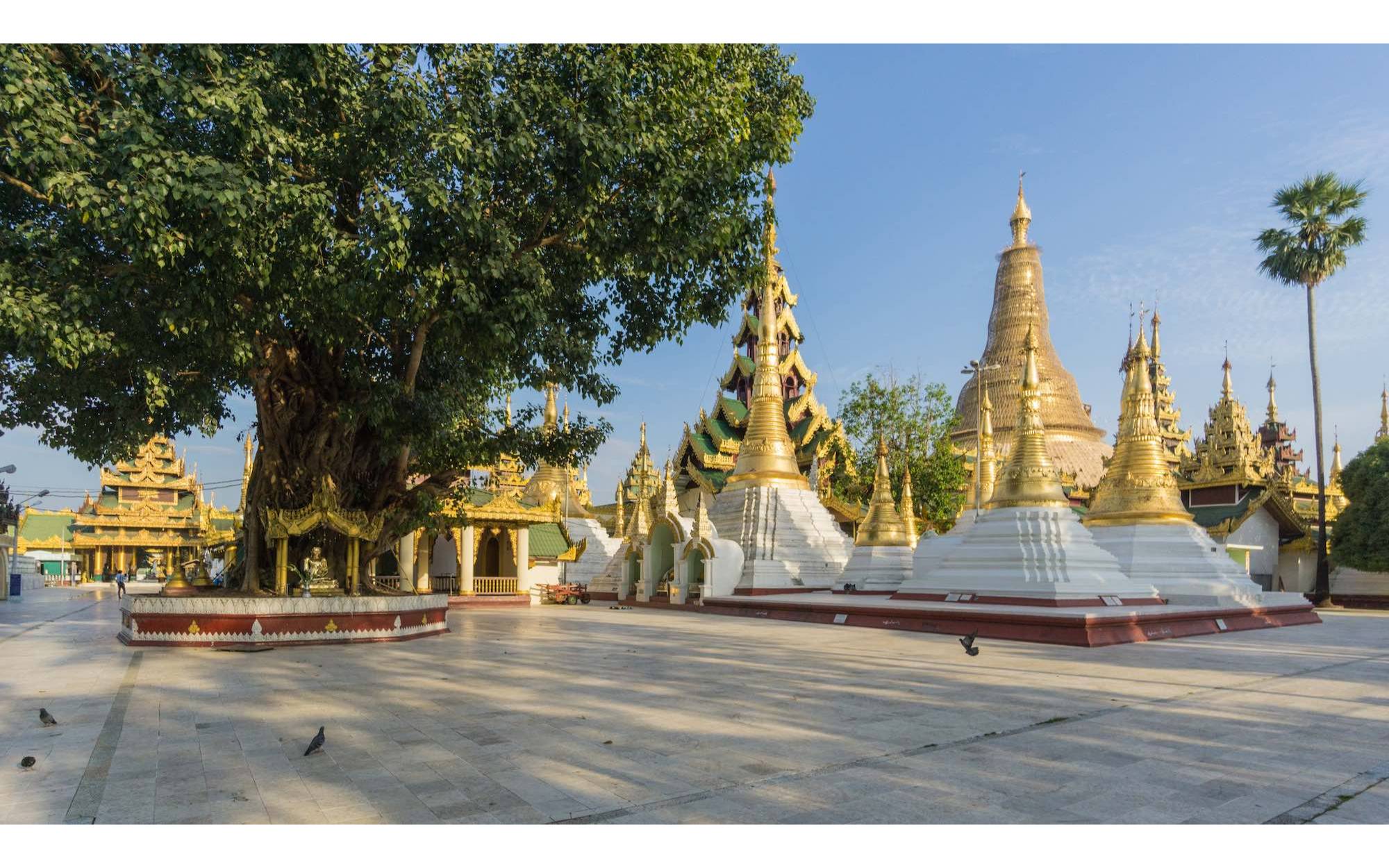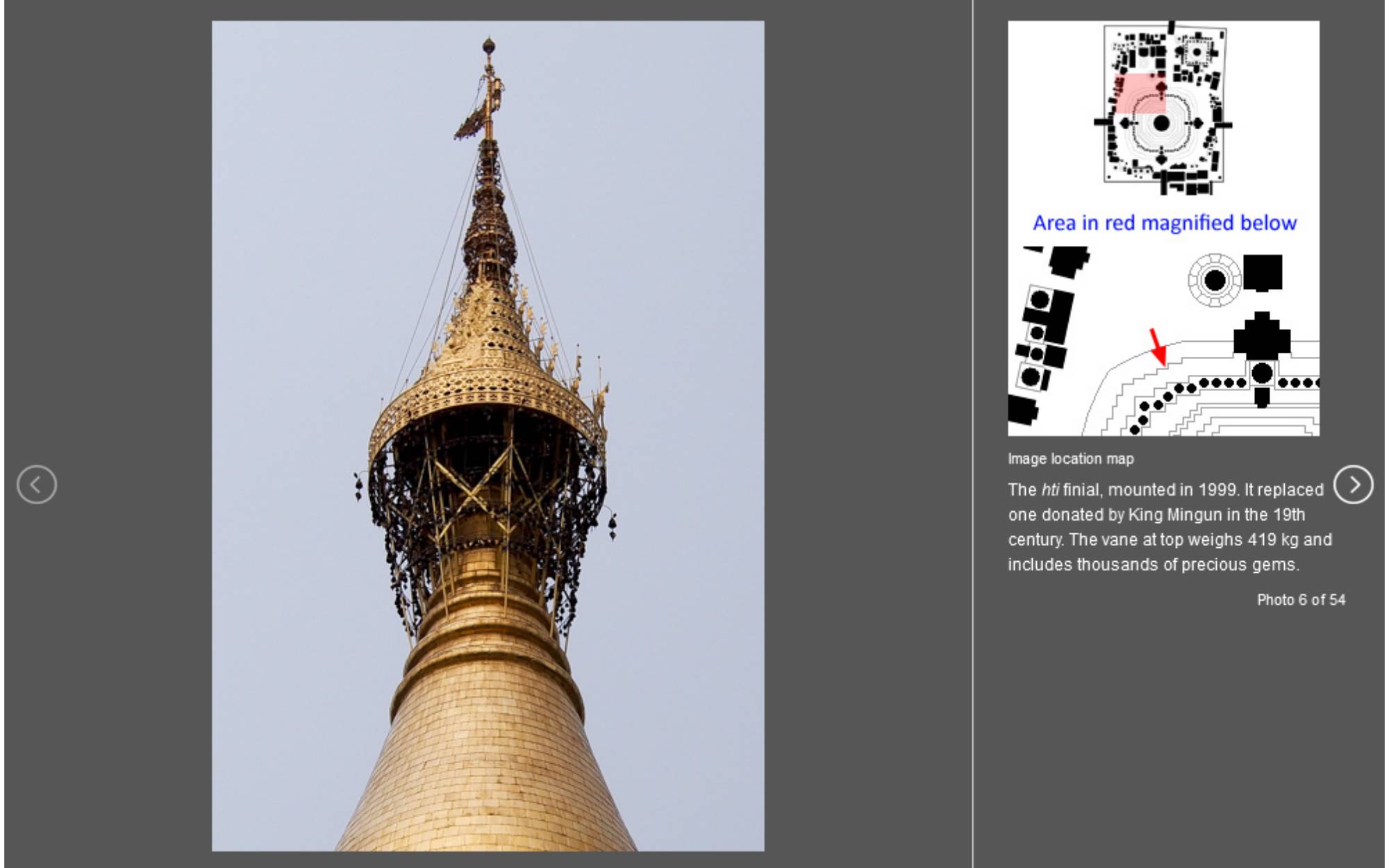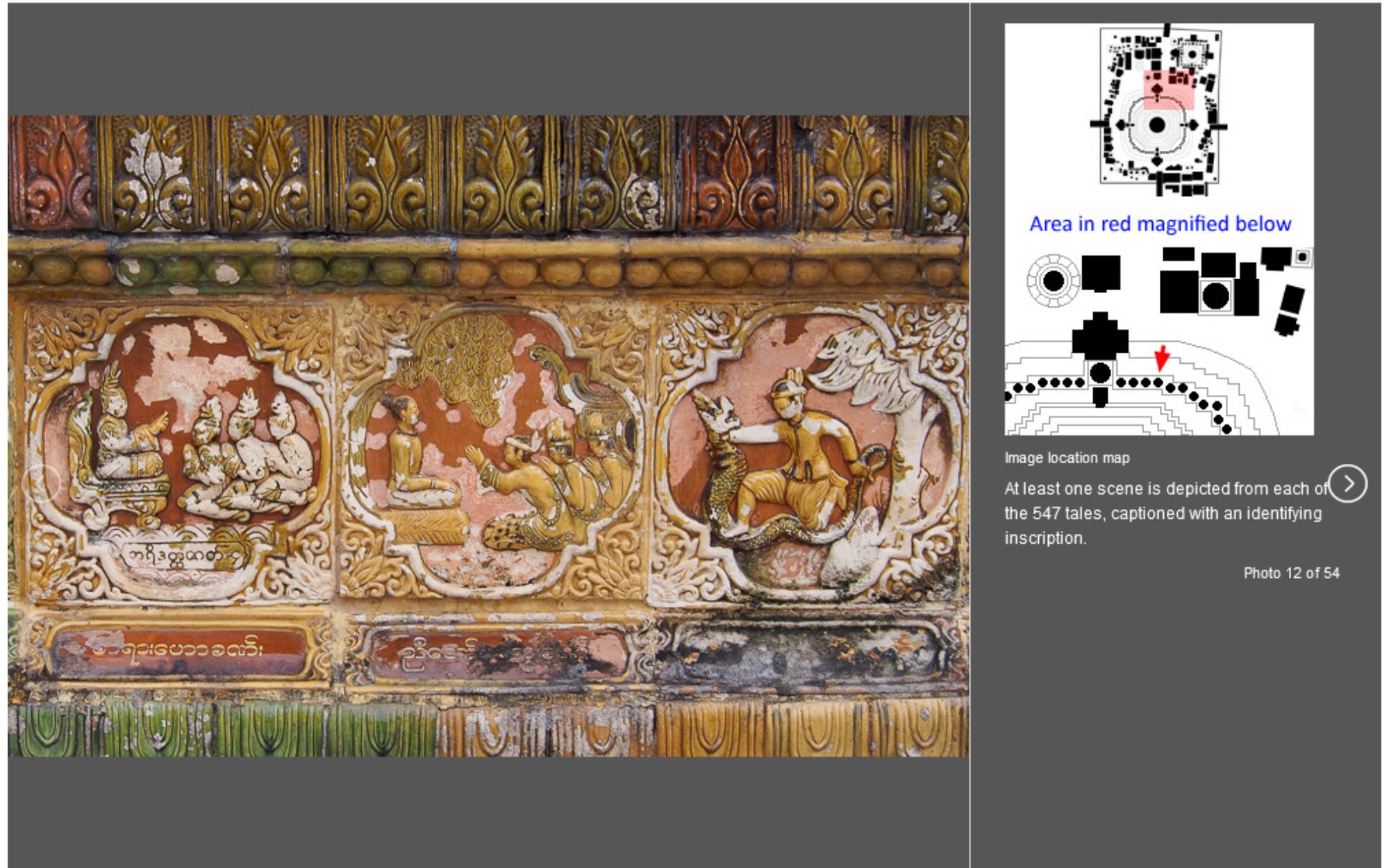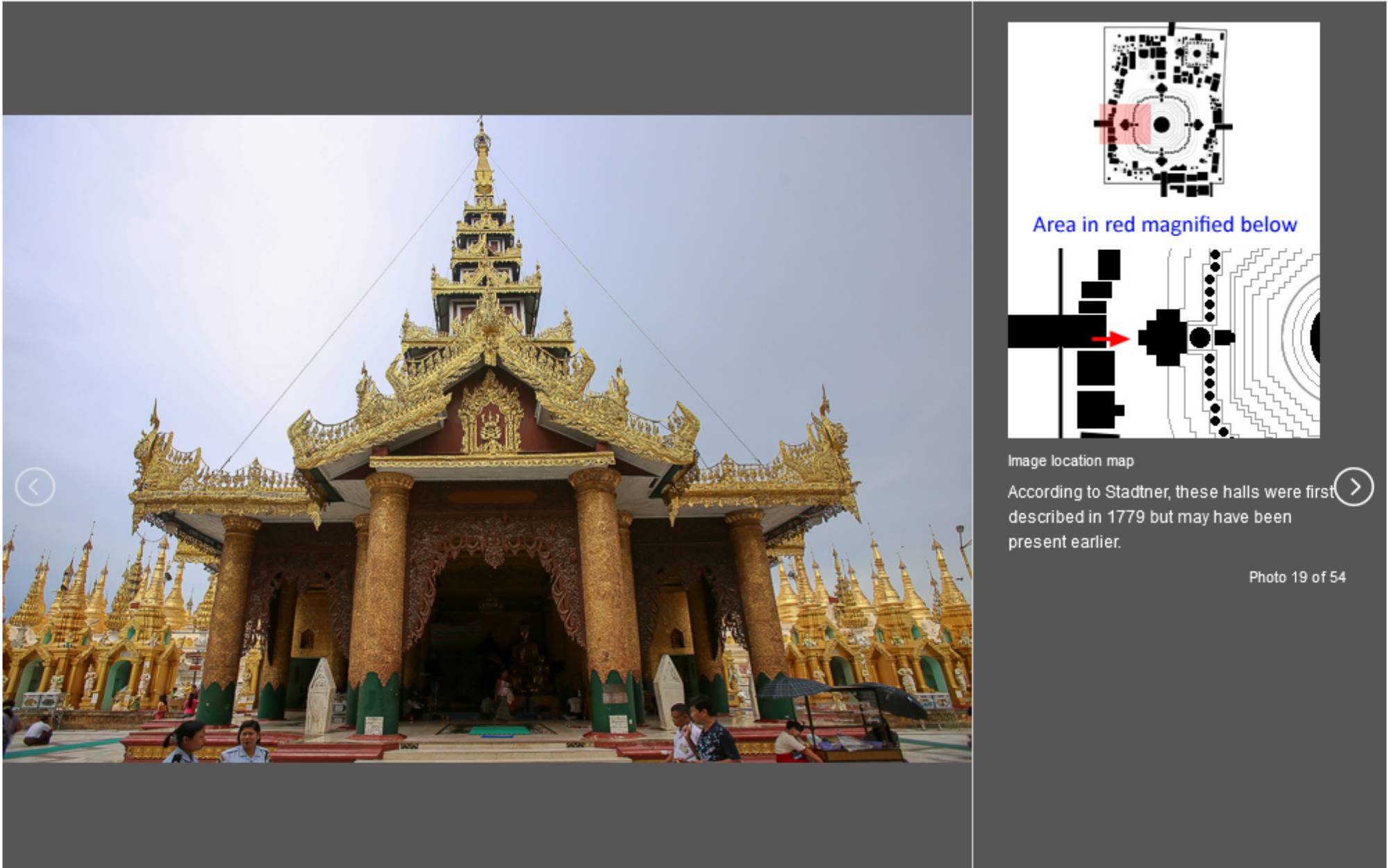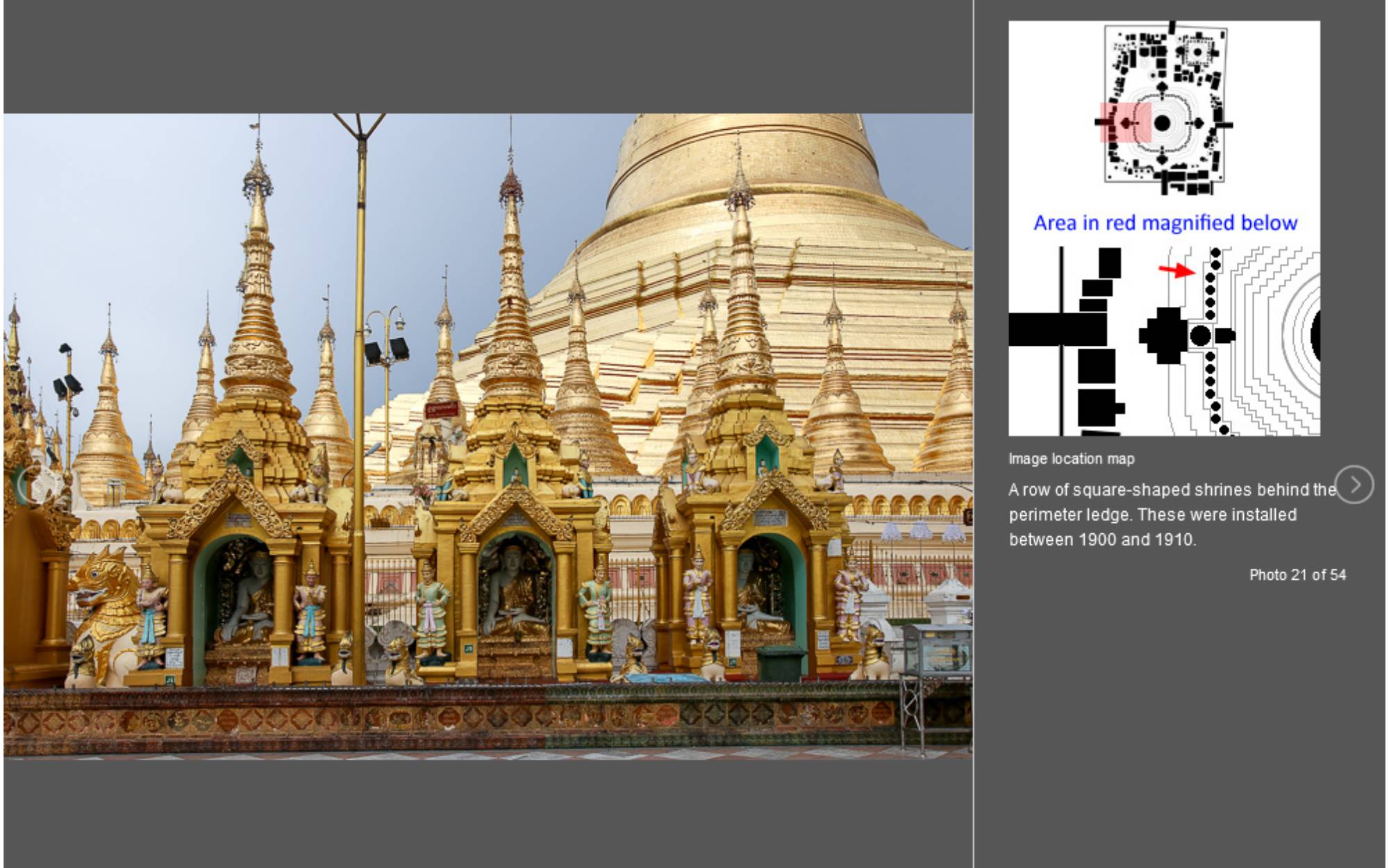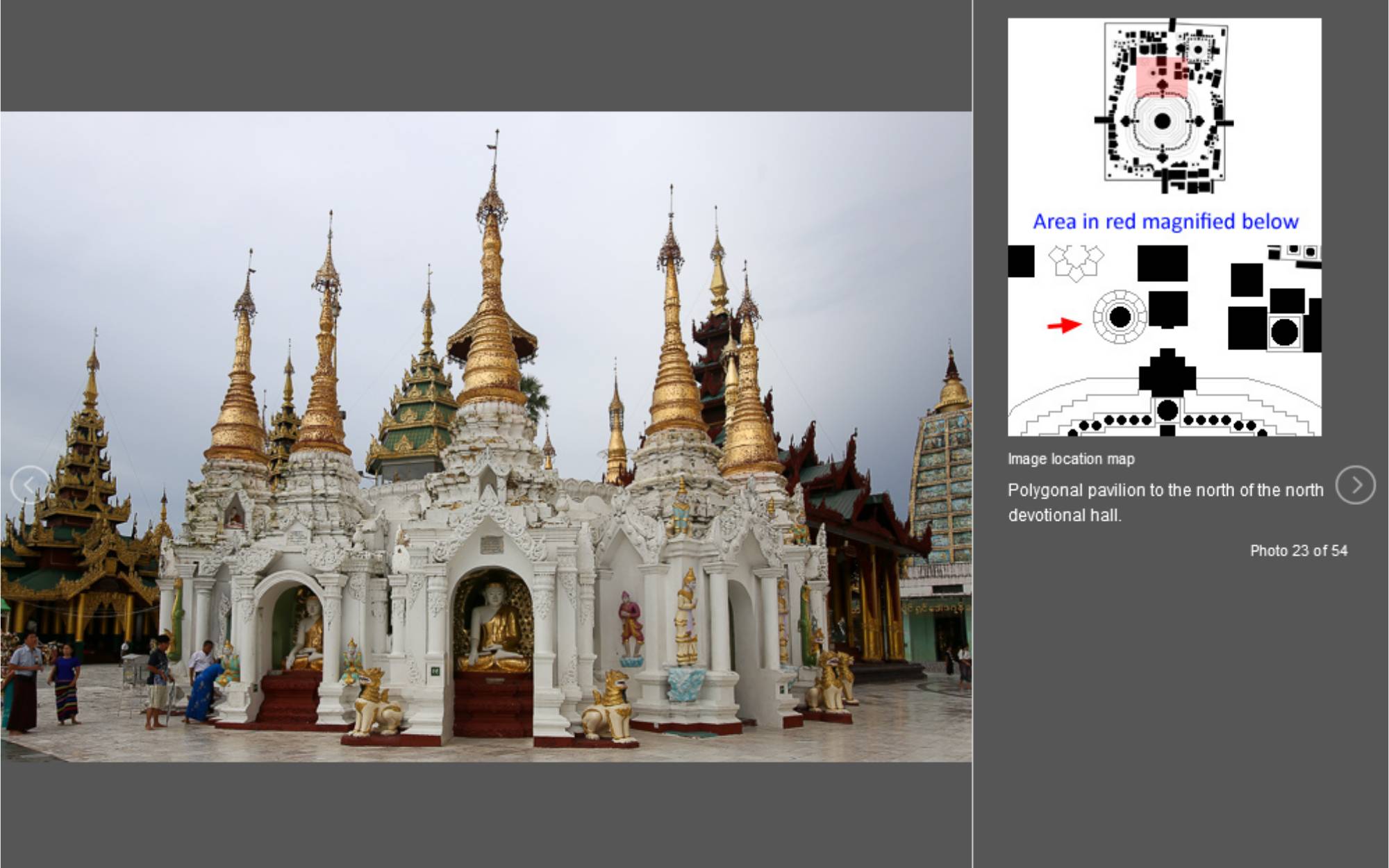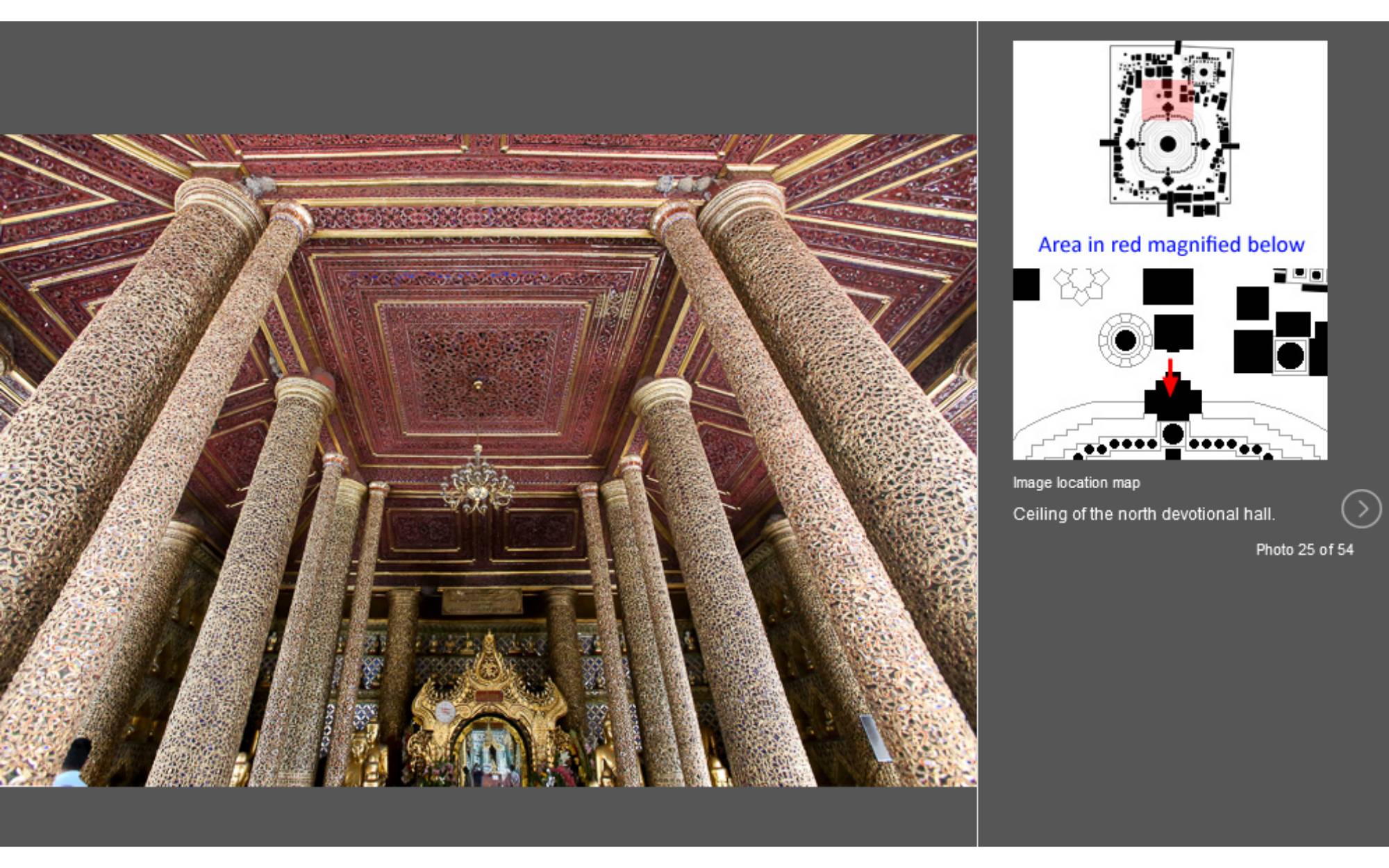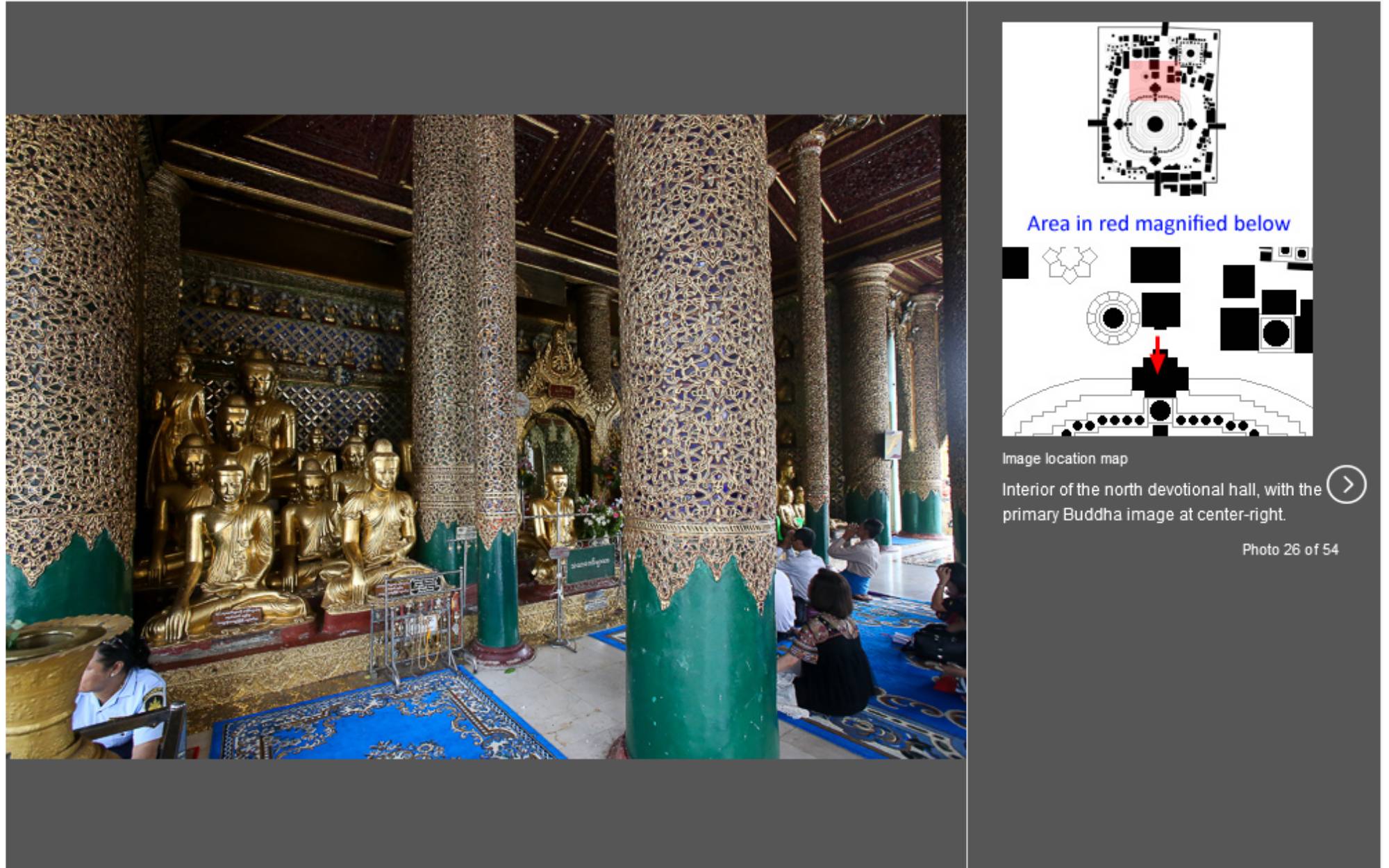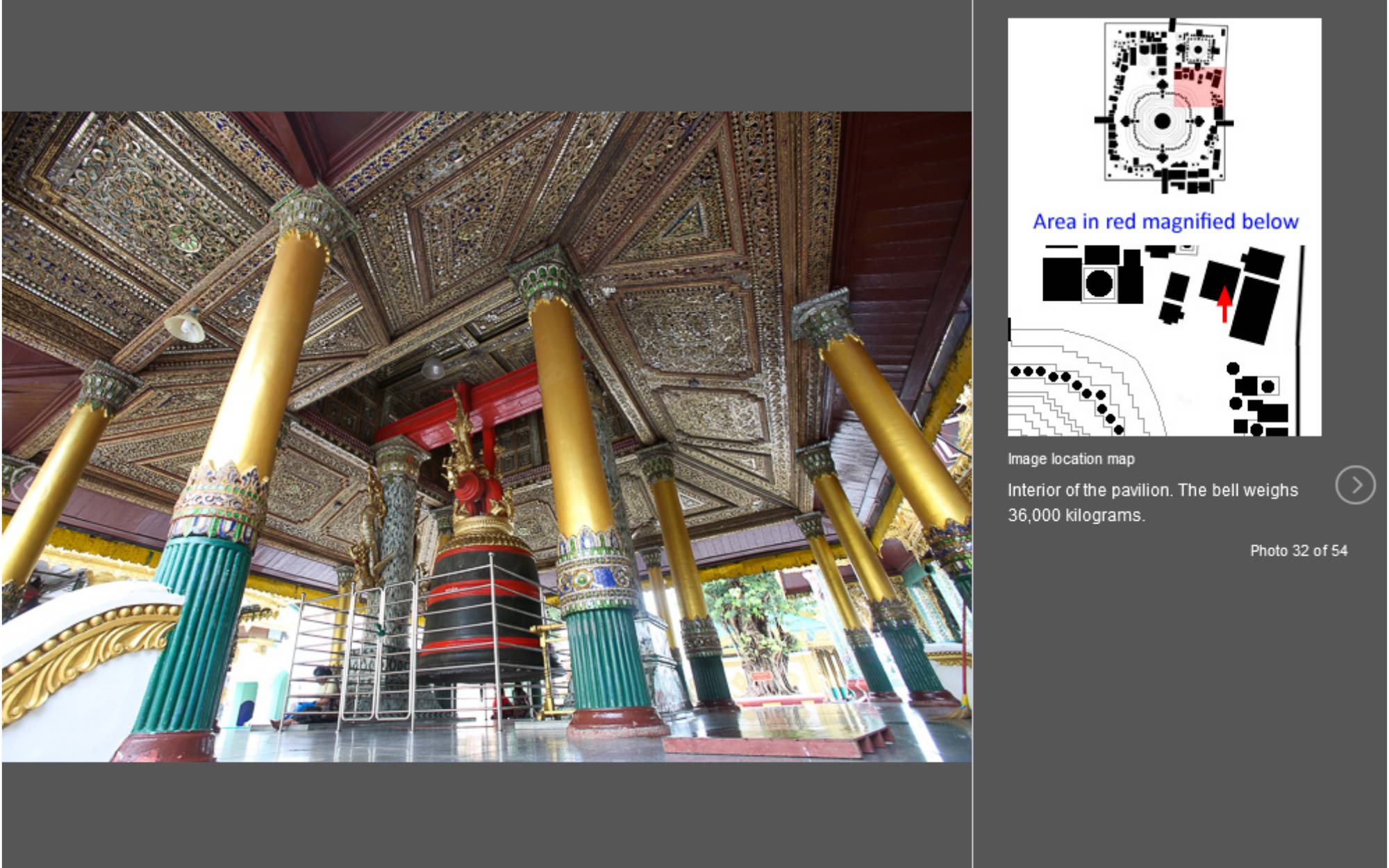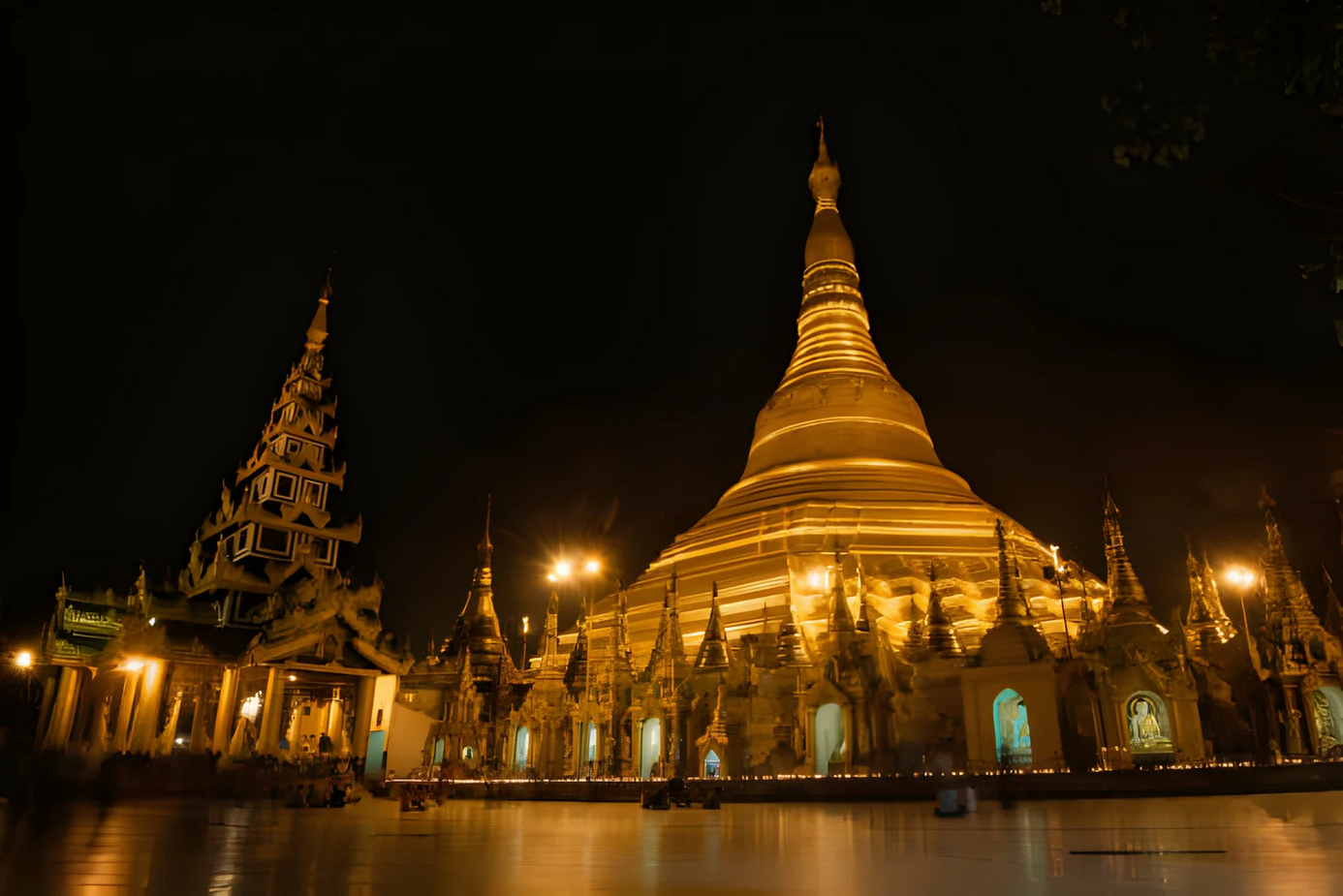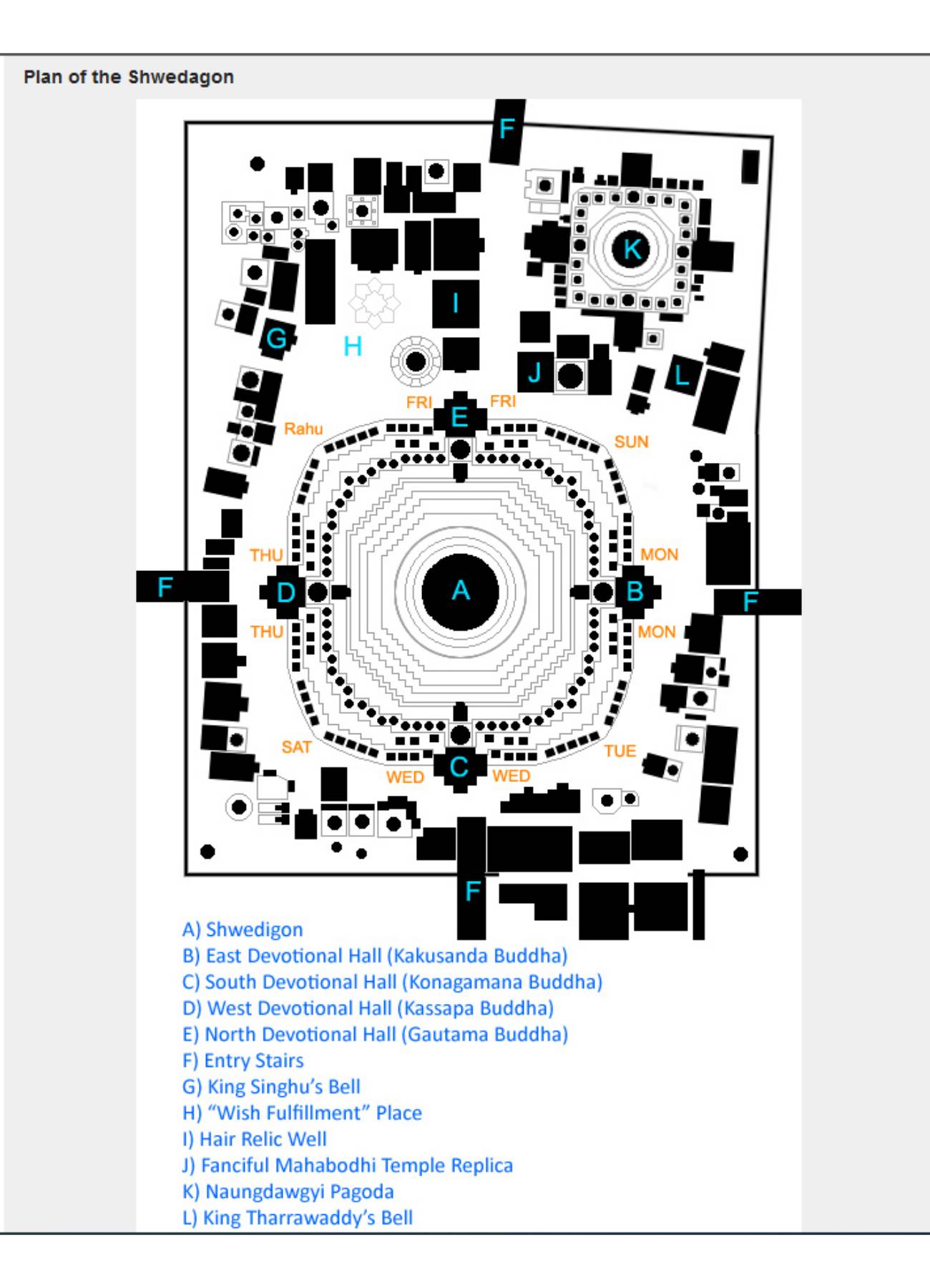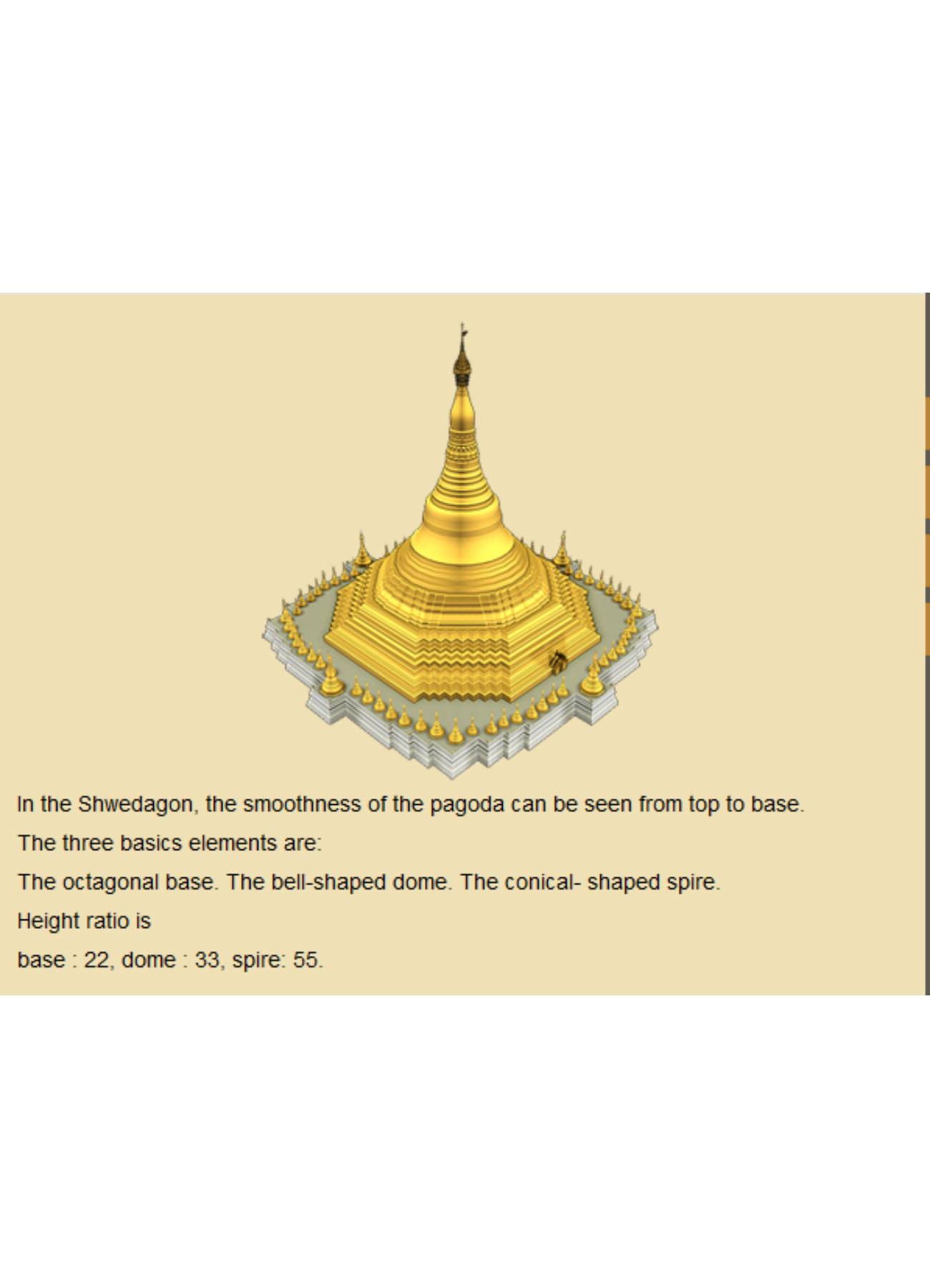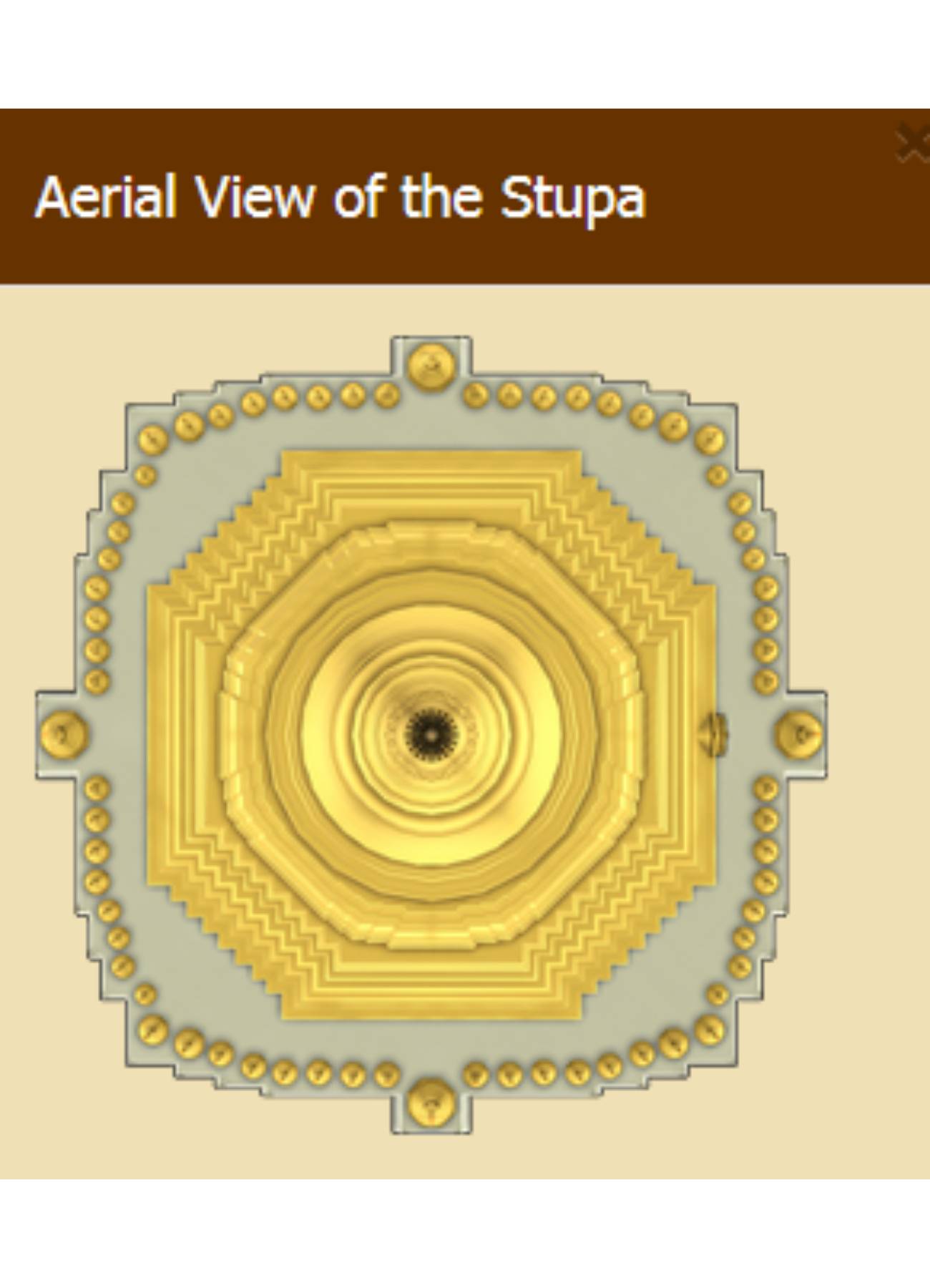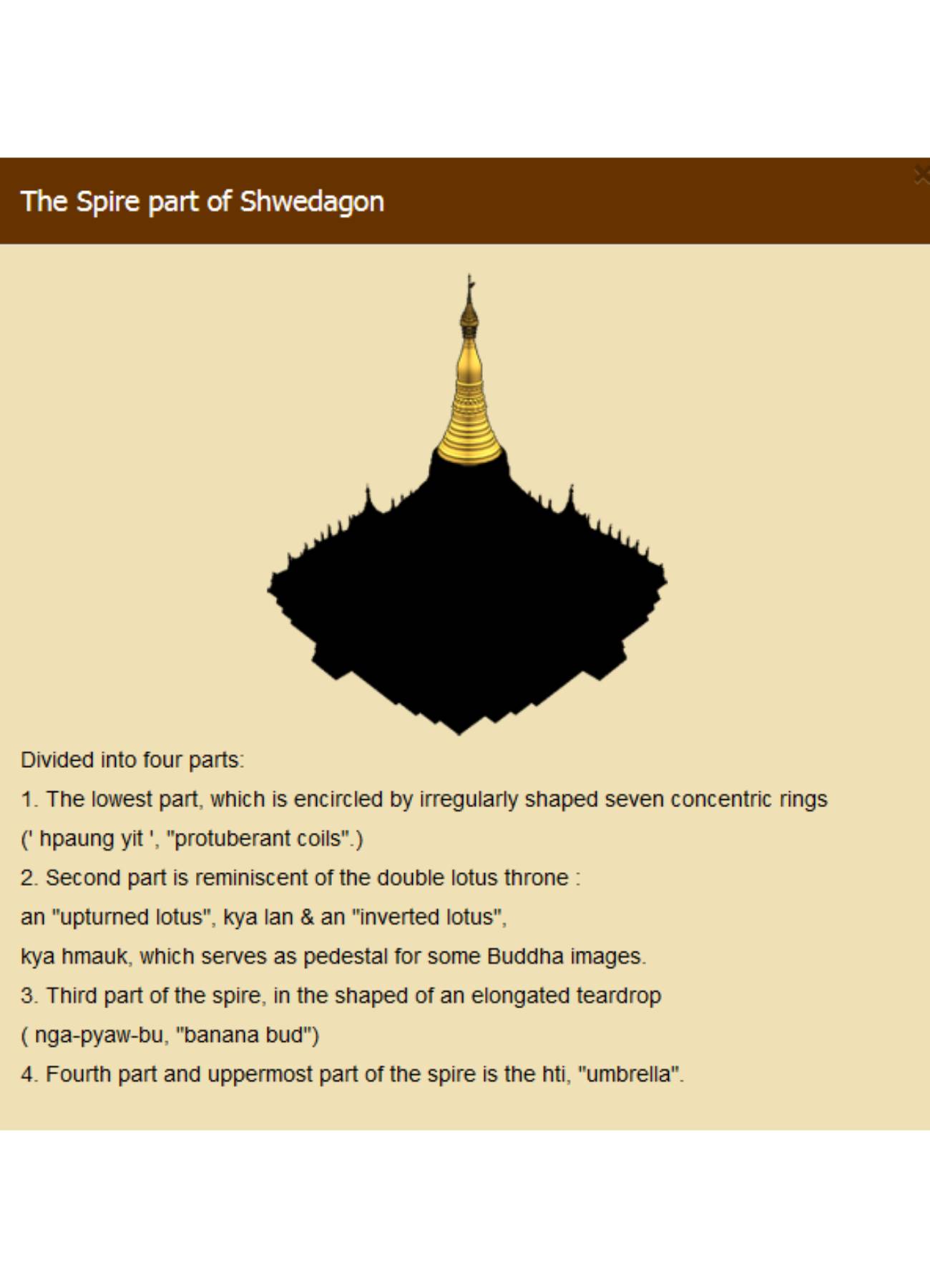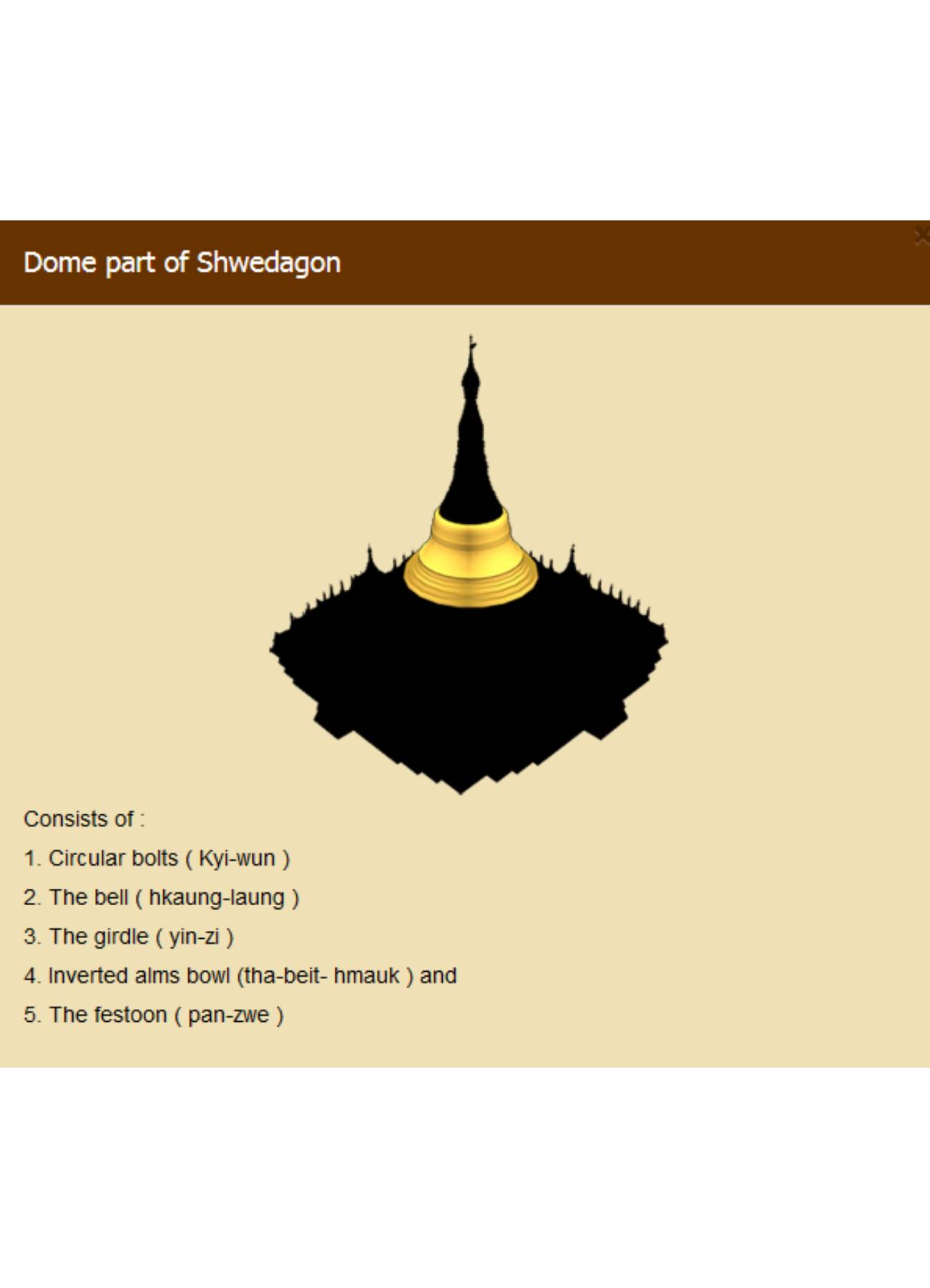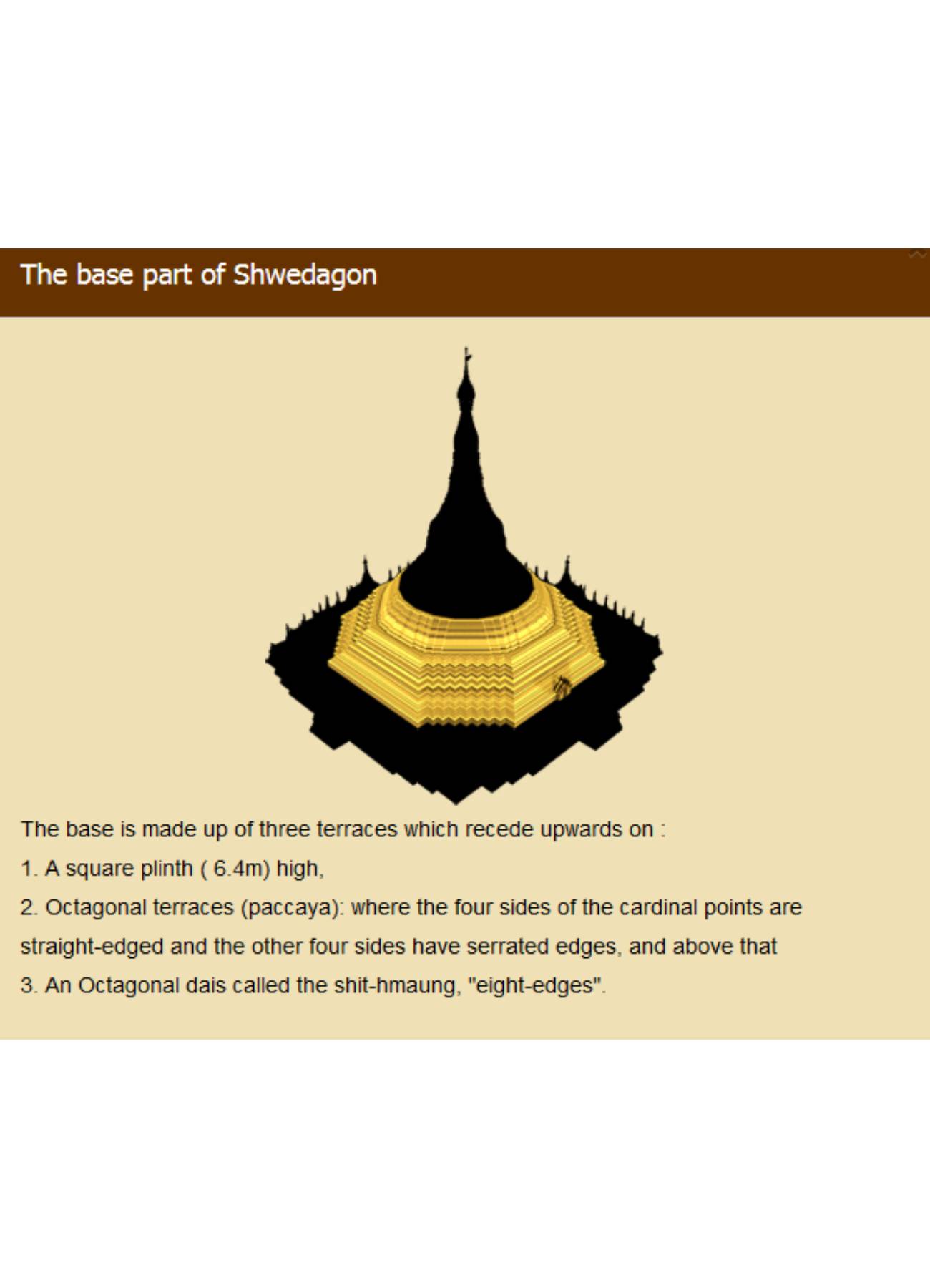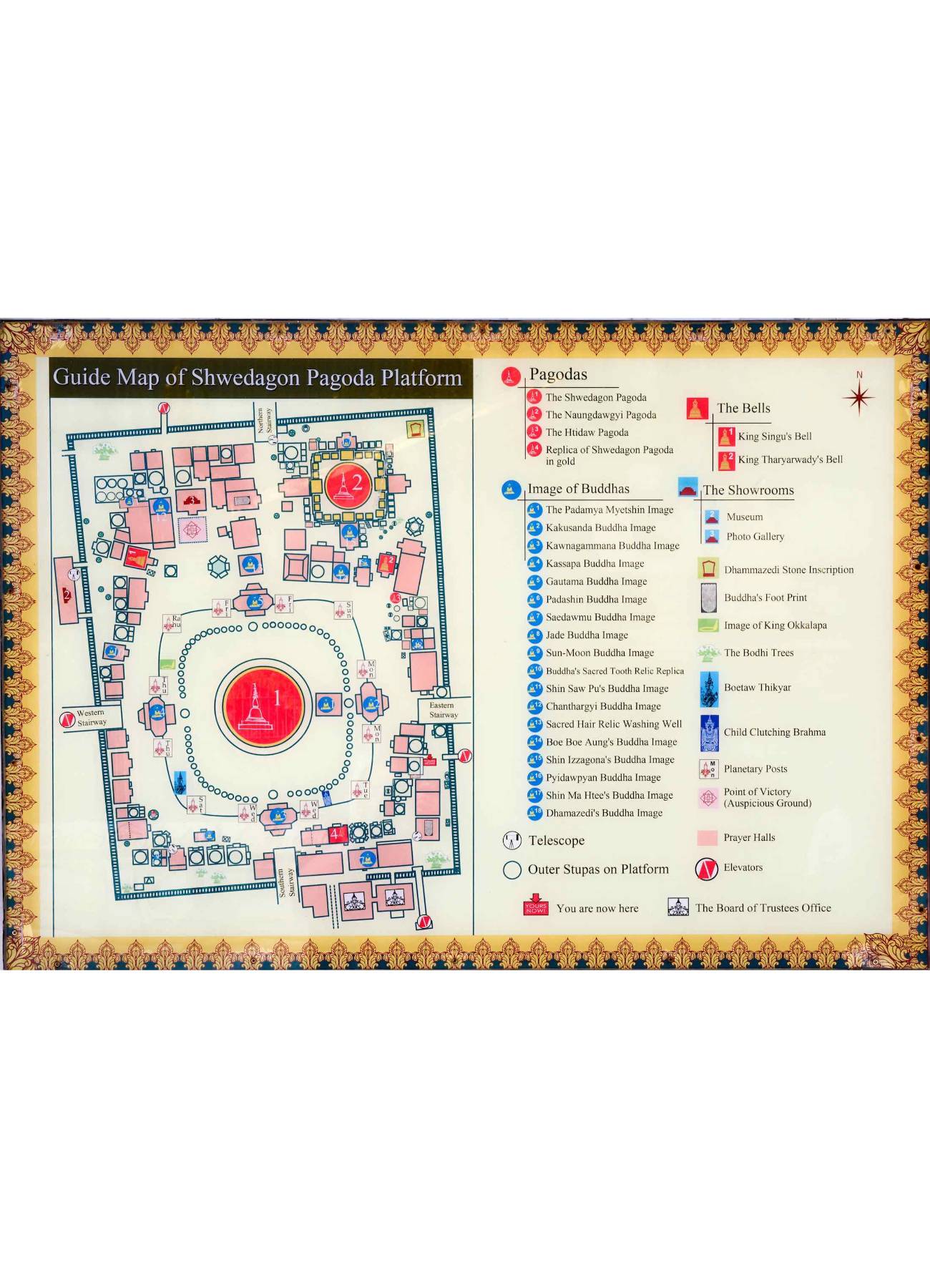Shwedagon Pagoda
Shwedagon Pagoda, yangoon
The Shwedagon Pagoda, also known as the Great Dagon Pagoda or the Golden Pagoda, is one of the most famous and revered religious sites in Myanmar. Here are some detailed aspects about this iconic structure. The Shwedagon Pagoda is believed to be over 2,600 years old, making it one of the oldest pagodas in the world. According to legend, it was built during the time of the Buddha and enshrines sacred relics, including strands of the Buddha's hair.The Shwedagon Pagoda is not only an architectural masterpiece but also a beacon of faith and cultural pride for the people of Myanmar. Its golden splendor and historical significance continue to inspire awe and reverence among all who visit.
History
The history of the Shwedagon Pagoda dates back over 2,500 years, making it one of the oldest pagodas in the world. According to legend, it was built to enshrine eight strands of Buddha's hair. Over the centuries, it has undergone numerous renovations and expansions, reflecting the devotion of Myanmar's people and their rulers.
- Origins: The pagoda was initially a modest structure, but it has grown significantly in size and splendor over time. King Binnya U of the Mon dynasty is credited with making significant contributions to its development in the 14th century.
- Renovations: Subsequent kings added to its grandeur, including raising the height of the stupa and adding gold plates. The most significant renovation took place in the 15th century under Queen Shin Sawbu, who donated her weight in gold to gild the stupa.
The mythological history of the Shwedagon extends back 2,500 years ago
to the historical Buddha's own lifetime in the 6th century BCE. A legend
recounts that two merchants from Burma, Tapussa and Bhallika, met the
Buddha in the northern Indian town of Bodh Gaya, which was destined to
become a Buddhist pilgrimage site in the centuries to come. The
merchants, overcome by the grace of the Buddha, offered him a meal of
rice cakes and honeyed food—which in some versions of the tale, was the
first meal the Buddha ate after attaining enlightenment. The Buddha then
provided the merchants with a keepsake in return, offering them 8
strands of his own hair, which they gratefully accepted as holy relics.
The merchants then returned to their homeland in Burma, bearing the
relics, and were welcomed with great pomp and ceremony by King Okkalapa,
the local ruler. The king then enshrined the relics in a zedi, creating the first incarnation of the Shwedagon.
Architecture
Architectural Features
- Height and Structure: The pagoda stands approximately 99 meters (325 feet) tall and is adorned with gold leaf, making it a striking sight, especially at sunrise and sunset when it glows beautifully.
- Stupas and Shrines: Surrounding the main stupa are numerous smaller stupas and shrines dedicated to various Buddhist figures. The layout of the complex is designed to symbolize Buddhist cosmology.
- Gold and Jewels: The entire structure is covered in gold plates, and the crown (or hti) is encrusted with thousands of diamonds and other precious stones. The largest diamond at the top weighs 72 carats.
The Shwedagon is an archetypal Burmese-style zedi, or chedi, characterized by a wide, flaring base, a bell-shaped body, and a tall, tapering spire capped by a hti (umbrella finial). The zedi's base is octagonal with redented edges, transitioning to circular bands 1/3rd of the way up. These in turn give way to the bell-shaped midsection (in Sri-Lankan fashion) topped with what is often described as an "inverted alms bowl". From here, the shaft slowly tapers along a series of rings which give way to multiple 'lotus-petal' bands topped with a 'banana bud'. As the banana bud tapers to a point, the hti covers the final few meters and is in turn topped with a vane and a diamond orb (the sein bu).
The zedi is gilded with gold, silver and copper plates that were often sponsored or donated by individuals seeking merit. Numerous jewels also bedeck the monument, with Stadtner noting that the very top of the monument holds "over 7,000 diamonds rubies, and sapphires attached to the vane and contained within the small orb-shaped object at the top" (Stadtner, p. 97). The vane alone weighs in at 419 kilograms and measures 130 centimeters in width, while the orb is 56 centimeters in diameter and contains 1,800 carats of fine diamonds.
The main zedi is surrounded by 64 small stupas resembling miniature bells. These in turn are surrounded by almost a hundred square-shaped shrines located nearly at ground level. Each monument is associated with one of eight 'planetary posts' that corresponds to a particular planet, a specific animal, and a day of the week (Wednesday is given two posts, one for the morning and the other for the afternoon). Worshippers will typically begin their visit by praying at the planetary post corresponding to their birth date, then continue in a clockwise fashion around the ensemble.
In between the planetary posts are four devotional halls facing the cardinal directions. The design of each is idiosyncratic and all were built or refurbished at different times, though none of the halls (or for that matter any of the standing structures apart from the zedi) were built prior to the 1860s. The halls all feature tall pyat-that style roofs and are mainly composed of highly ornamented wood. As the Shwedagon was purportedly founded to enshrine the hair relics of Gautama Buddha, along with relics discovered from the prior three Buddhas, one hall is assigned to each of the four Buddhas.
The outermost periphery of the Shwedagon is a low parapet wall that completely surrounds the monument. It was built in 1999 during the last phase of major reconstruction at the Shwedigon. The top of the ledge is a convenient space for worshippers to light votive candles, while the outward-facing side of the ledge is fitted with over 500 tiles depicting the Jataka tales, the past lives of the Buddha.
The ensemble that comprises the Shwedagon, its gates, the planetary posts and subsidiary shrines all sits one what is often referred to as the middle terrace, a broad rectangular expanse of ground that designates the grounds of the temple. Many dozens of freestanding pavilions are scattered across the ground in no apparent order, though most are clustered at the edges of the middle terrace so as to leave room for worshippers circum-ambulating the chedi.
Access to the middle terrace is provided by a number of entrances,
chief among which are four sets of stairways facing the cardinal
directions.

